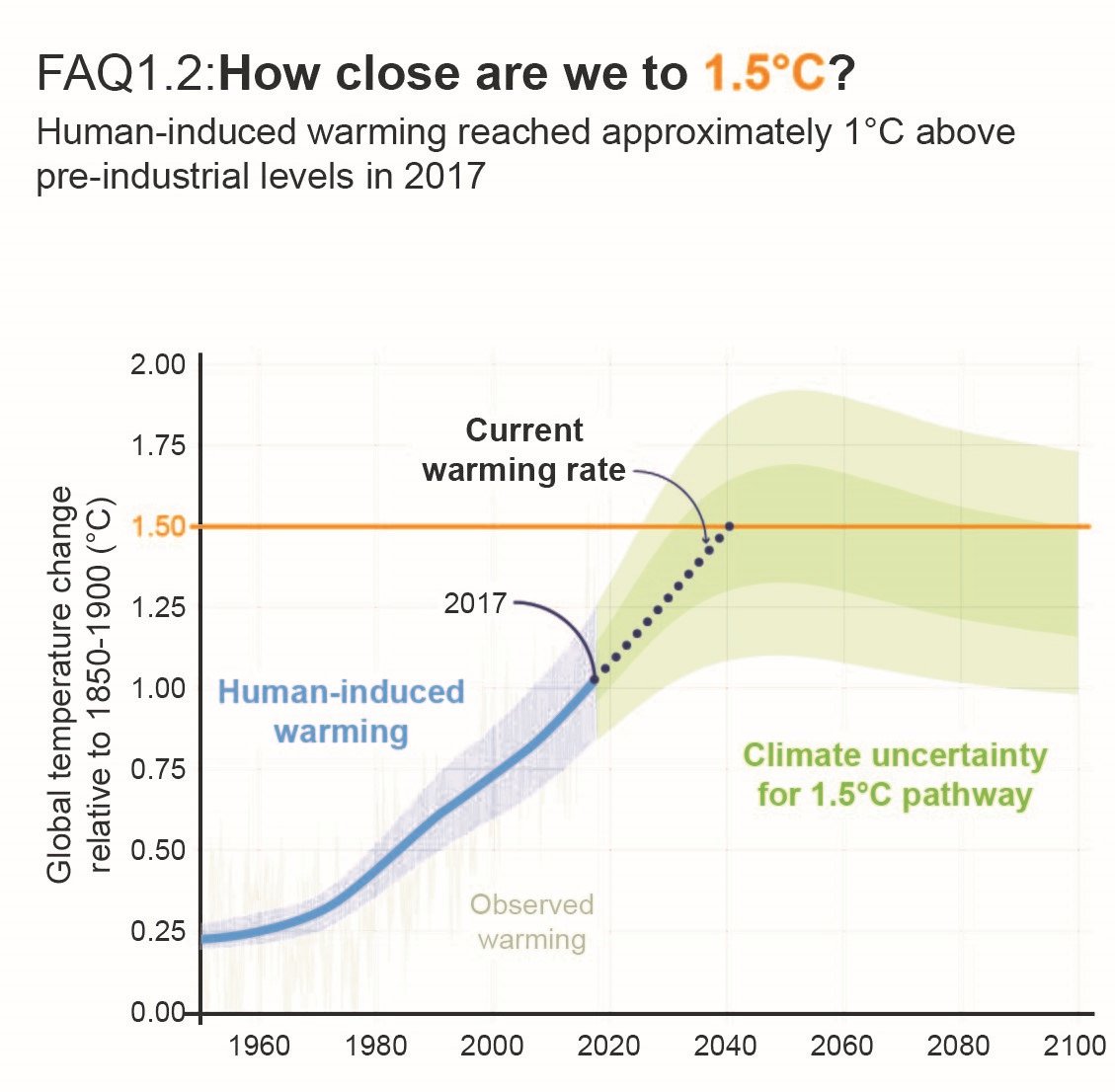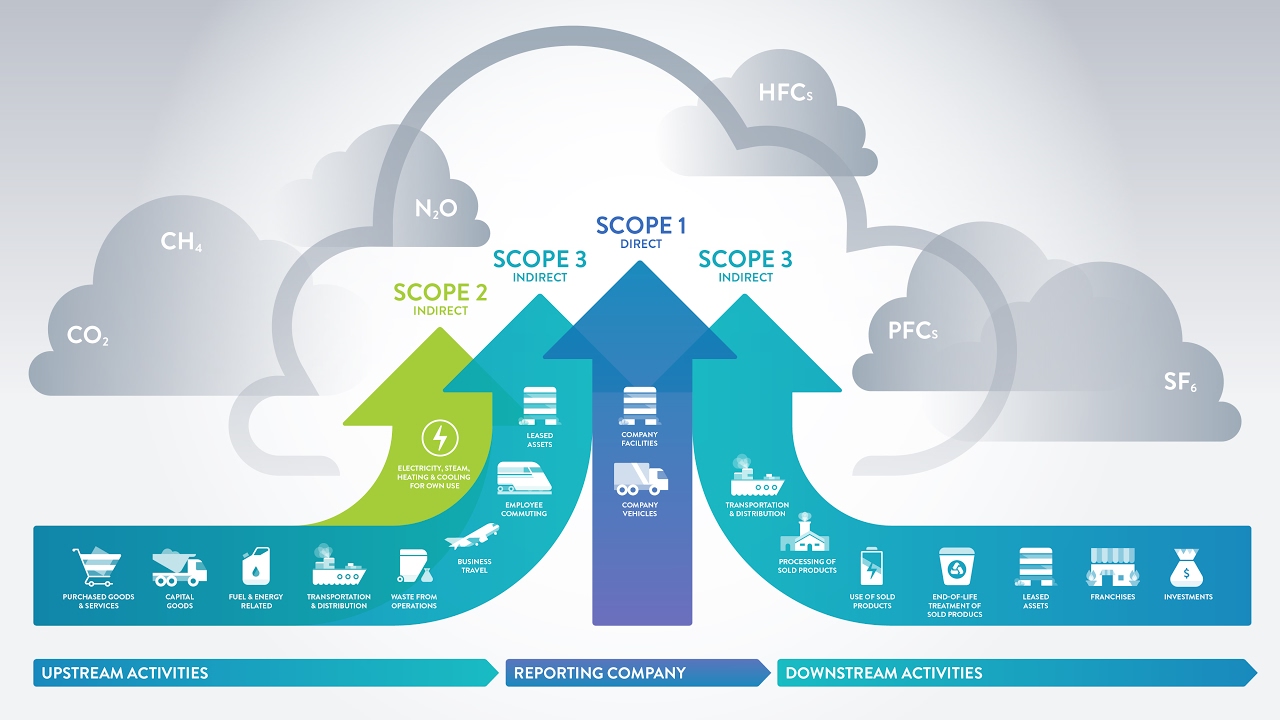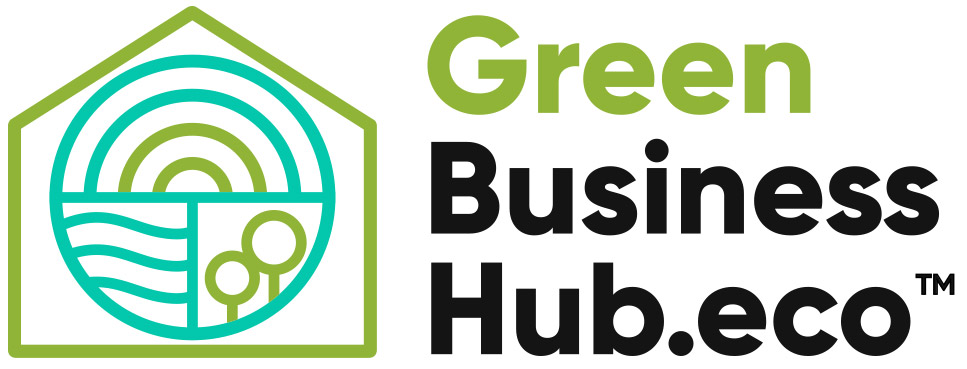Background
More than 190 countries including the UK have adopted the Paris Agreement, a legally binding international treaty on climate change reached at COP21 in 2015. The Agreement aims to keep a rise in global temperatures to below 2°C from pre-industrial levels (1850), by the end of this century…

Signatories also agreed “to pursue efforts” to limit the temperature increase to below 1.5°C. To achieve this target, global greenhouse gas emissions will need to be ‘Net Zero’ by the second half of this century.

Image courtesy of IPCC
Furthermore, the UK government has stated our common objective of reducing Greenhouse Gas Emissions by 68% by 2030 (vs. 1990 levels) as part of our commitment to the UN’s global ‘Race to Zero’ campaign, and a 78% reduction in emissions by 2035 – effectively bringing forward our ‘Net Zero’ target by 15 years!
Some of the key headline strategies to achieving this, (see ‘Net Zero Strategy: Building back Greener’) include a target of 100% clean electricity by 2035, a ban on new petrol and diesel car sales by 2030 with all vehicles ‘Net Zero capable’ by 2035 and no ‘new build’ domestic gas boiler installations after 2025 and a ban on traditional gas boiler replacements after 2035!
What is a Carbon Audit?
In the context of the ‘top down’ government target setting, businesses are naturally coming under increasing pressure from customers and suppliers alike to adapt and embrace more sustainable working practices.
This can be quite daunting, and for many businesses a simple initial first step in the process of developing their own ‘Net Zero Roadmap’ is to benchmark their existing emissions or carbon footprint by following the internationally recognised Greenhouse Gas Protocol accounting standards.

Image courtesy of GHG Protocol
As the Greenhouse Gas Protocol itself puts it: “Developing a full [greenhouse gas] emissions inventory – incorporating Scope 1, Scope 2 and Scope 3 emissions – enables companies to understand their full value chain emissions and focus their efforts on the greatest reduction opportunities”.
CO2 is by far the most prevalent of the greenhouse gases in our atmosphere, comprising ¾ of all emissions and is therefore the most widely used measurement for carbon footprint purposes in organisations. In agriculture and farming, as well as ‘fracking’ for natural gas, methane (CH4) is also an important greenhouse gas which needs to be accounted for as part of a ‘net zero’ strategy.
How do I get started?
The key to an accurate ‘carbon audit’ lies in the quality of the data being used for input purposes. Rather than trying to digest the minutiae of the reporting standard itself, for most small to medium sized organisations the above Scope 1/2/3 summary diagram should suffice as a starting point for the data that needs to be collected.
Don’t worry about how to turn fuel or material or utility usage data for example into Kg CO2/e either! The government has kindly published and regularly update useful conversion tables to directly translate your ‘consumption’ data into a corresponding CO2e value using approved multipliers.
Please see:
https://www.gov.uk/government/collections/government-conversion-factors-for-company-reporting
As such, and assuming your data collection and inputs are accurate, you can be confident that the carbon audit reporting will provide in accounting terms a ‘true and fair view’ of the emissions in your business and will enable future time period comparisons to be made on a ‘like for like’ basis. It will also provide KPI benchmarking for following years as part of a ‘Net Zero’ or reduction strategy. Crucially, it will also stand up to scrutiny for audit purposes e.g. client/supplier requests for PQQ’s for example as part of a tender process.
Will it hurt my business commercially if I do nothing?
Increasingly, and certainly for central and local Government contracts in excess of £5M for example, it is becoming mandatory for businesses to demonstrate their Scope 1/2/3 emissions ‘carbon reduction plan’ or CRP to achieving Net Zero by 2050 as part of the tender invitation process.
Often your organisation will form part of a wider supply chain as part of this tender process. The ‘Tier 1’ contractor will need to evidence that their sub-contractors are also able to demonstrate their ‘Net Zero’ credentials in the form of a carbon reduction plan therefore, and indeed are likely to request this as part of their own PQQ process in the first instance!
In the construction industry you are also increasingly likely to be asked to submit a ‘carbon budget’ alongside your traditional financial budget on projects!
We have also heard from clients recently where their bank has refused to offer them future credit facilities unless they can provide evidence of a carbon reduction plan! Clearly for the bank concerned, accountability for, measuring and reducing their Scope 3 emissions also extends to looking at who they actually lend money to in the first instance!

Image courtesy of HM Government
“The Carbon Reduction Plan should be updated regularly (at least annually) and published and clearly signposted on the supplier’s UK website. It should be approved by a director (or equivalent senior leadership) within the supplier’s organisation to demonstrate a clear commitment to emissions reduction at the highest level. Suppliers may wish to adopt the key objectives of the Carbon Reduction Plan within their strategic plans”. Cabinet Office, Carbon reduction Plan Guidance
Where can I get help & advice?
Is your business coming under increasing pressure from customers to adapt and embrace more sustainable working practices? Green Business Hub offer businesses practical help and advice with;
-Initial Carbon Footprint Audits
-Net Zero Strategy & Planning
-Green Procurement
-Grant Funding Advice
Please email us at: martin@greenbusinesshub.eco

